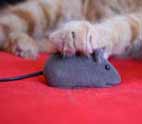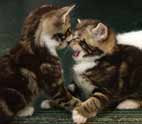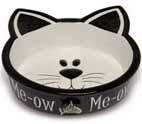Cat Social Behavior and Us
Cat social behavior can either be very subtle or can be completely obvious. They are very good at letting us know if they are a happy cat or feeling sad.
Although cats are known to be asocial creatures, this does not mean they are anti social. It just means that they can get by on their own if necessary.
Domestic cats however definitely show signs of affection for their human friends.
Some say this is just because they want something such as food, but what about those times after dinner when they curl up next to you or when they nudge you for a tickle?
Our beloved ‘Little Mo’ showed a specific cat social behaviour. She would sit by the door every evening waiting for her human Dad to come home. As he walked in she would make those charming little chirruping noises and demand that he instantly sit down so that he could give her a stroke and tickle. That was definitely a form of social behaviour!
Bonding With Your Cat
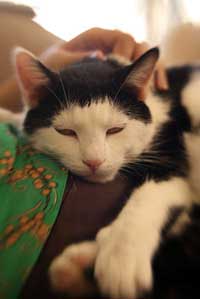
Bonding with your chosen pet is much more involved than just feeding them. For a relationship to build between the two of you and for them to become a real cat companion, time must be spent getting to know each other.
One of the best ways to build up a relationship is obviously through play. These days there is such a wide range of toys available for cats and they are easily purchased online. Why not have a browse at places like Petshop.com and see what new and exciting play things you can find to help you build that special relationship?
Playing and talking to your feline friend is really important especially in the early days, responding to them when they seek you out and helping to build trust between you both.
But don’t be tempted to swamp your pet with too much attention as this might make them nervous at first, especially if they have come from a rescue home.
They will need time to settle in and find their own way round. Just make sure that you are available to them and they will soon start to show their natural cat social behavior.
Clingy Cats Can Be A Problem
Mo was a bit clingy at first. She followed us everywhere and even sat outside the bathroom door waiting for us to come out. She would sit really close all the time and was generally getting under our feet.
At first it was cute but eventually we had to try and stop this kind of cat behavior, as we didn’t want her to become overly attached to us.
Our solution was not to encourage her to always sit on our laps but to use her own bed. If she was persistent we would quickly blow on her face, just a little puff of air, just the once. This would surprise her and she would then back off, but she didn’t feel punished as it was just a gentle little reprimand.
Secondly, we did not always pet her when she came looking for attention. Her natural cat social behavior was to try to get in our way until we gave in and gave her a stroke. But by not giving in, she learnt that she would get affection, but not when she was yelling or climbing all over us.
Separation Anxiety A Cat Social Behavior Disorder
Separation Anxiety is a specific disorder where an animal feels extremely insecure when separated from their owner. It is more easily recognised in dogs where the animal will be heard barking or whimpering continuously when left on their own, even for a very short period of time.
But cats can suffer from it as well! Read our dedicated page all about separation anxiety and learn how you can ensure your pet doesn’t suffer from this unpleasant problem.
Children And Cat Social Behavior
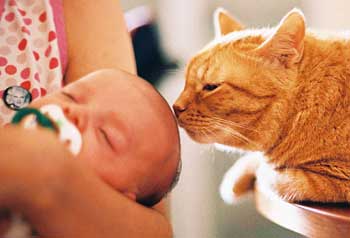
Children can benefit enormously by observing cat social behavior. Many lessons can be learnt about positive interaction with another living creature, being gentle and caring, and how to be responsible.
However, very young children must be monitored whenever they are near any animal. Pulling of tails and grabbing handfuls of fur could lead to the animal lashing out. Well how would you like it? But try not to shout at either child or cat, after all they are both just learning.
Make sure that your cat does not become neglected once a child appears on the scene. This may cause resentment and jealousy. Introduce them to the child gradually and get them used to the child’s scent by letting them smell some of the child’s belongings and clothes.
It’s a good idea to play with your pet while the child is watching so that they can see what their cat companion likes. By trying out different types of toy you can keep both your child and your pet entertained at the same time. In this way they may go on to become the best of friends and have many years of fun and happiness together. Why not take a look at Petshop.com to see what your cat might enjoy?
The Rewards Of Owning A Cat
What is a home without a pet? Well for people living on their own or the elderly, it can be a lonely place. What better than to come home to a warm welcome everyday no matter what. Studies have shown that owning a pet provides positive physiological and psychological health benefits.
Being able to look after an animal can provide people, especially the elderly, with a sense of being needed, therefore boosting their self-esteem. Cat social behavior and their ability to let us into their family is a real privilege.
There are real health benefits to us as humans. Medical research has shown that people who own a pet:
- Have lower levels of stress.
- Have less sleep problems.
- Are less likely to become sick as non-pet owners.
- Have lower blood pressure.
- Suffer less from heart problems.
- Recover from illness quicker.
Cats are also therapeutic for those suffering from dementia and mental health problems such as depression, even helping to reduce aggression with those who suffer with violent behavior.
So what are you waiting for? Go get yourself a cat, quick!
One of the best ways to help build that special bond with your pet is through play, and cats love variety. Petshop.com offers a wonderful range of exciting toys that your cat will love playing with, enabling you to share many fun and special moments together.
Top of this Cat Social Behavior



